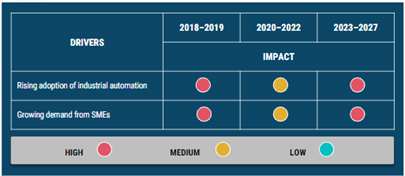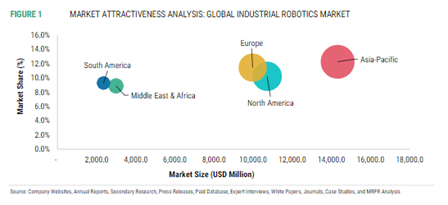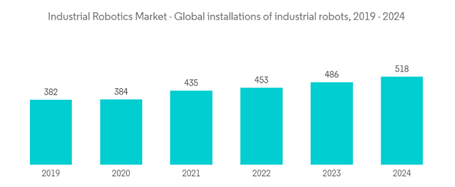Buy Now
Story Outline
- Population growth fuels the demand for seafood, boosting the fish feed market in KSA.
- Economic prosperity drives preference for nutritious seafood, fueling fish feed market growth.
- Governments Vision 2030 promote aquaculture and sustainable practices, propelling fish feed market growth.
- Health consciousness increases demand for nutritious seafood, driving fish feed market growth.
- Technological advancements improve fish farming efficiency, stimulating the fish feed market in KSA.
The Kingdom of Saudi Arabia (KSA), renowned for its oil wealth and sacred Islamic sites, is emerging as a significant player in the seafood and fish feed market. This transformation is intriguing, given that the desert nation has historically relied on seafood imports to meet its demand.
Several factors contribute to this positive shift, including population growth, a rise in income levels, supportive government initiatives, enhanced health awareness, and industry-specific technological advancements.
According to Ken Research, The KSA Seafood and Fish Feed Market is expected to reach $900 Mn by 2027, currently the market is growing at a CAGR of ~11% in 2022.
5 Major Reason for the Growth of the KSA Seafood and Fish Feed Market are:
1.The Rising Population Tide

Interested to Know More about this Report, Request for a sample report
Saudi Arabia's population has been on a steady rise, reaching approximately 35 million in 2021, with an annual growth rate of about 1.59%.
This demographic trend invariably propels a surging demand for food. Given the protein-rich nature of seafood, it's particularly sought after, more so due to the global shift towards healthier dietary habits.
The World Health Organization's dietary guidelines recommend a weekly intake of 280-560 grams of fish.
Applying this guideline to Saudi Arabia's current and projected population, the demand for seafood and, consequently, fish feed, is anticipated to escalate. This population-driven demand creates a robust market for the seafood industry, and by extension, the fish feed market.
In aquaculture, the significance of quality feed is paramount. Efficient growth, health, and productivity of fish heavily rely on their diet.
As the population fuels the demand for seafood, the requirement for high-quality fish feed is set to rise proportionately, paving the way for a thriving fish feed market in KSA.
2.The Impact of Economic Growth on Dietary Preferences

As Saudi Arabia rides the wave of economic prosperity, its GDP per capita has been on an upward trajectory, from $20,813 in 2016 to an estimated $23,566 in 2021. This rising affluence is not just elevating living standards but also transforming dietary preferences.
With higher disposable income, the Saudi populace is exhibiting a growing inclination towards diverse and nutritious dietary choices.
Seafood, rich in essential nutrients like Omega-3 fatty acids and proteins, is progressively becoming a favored choice. This trend has catalyzed the seafood industry's growth and has created a ripple effect on the fish feed market.
The quality and type of fish feed significantly influence the nutritional value and taste of the seafood.
As consumers demand healthier and tastier seafood options, the fish feed market needs to innovate and provide feed solutions that help produce such desired seafood qualities.
Hence, economic prosperity indirectly nudges the fish feed market towards growth and innovation.
3.Major Government Initiatives and Policies

Visit this Link :- Request for custom report
The Saudi government has been instrumental in facilitating the growth of the seafood and fish feed market.
As part of its ambitious Vision 2030 strategy, the government aims to achieve substantial self-sufficiency in seafood production. The goal is to produce 600,000 tons of seafood by 2030, thereby reducing the nation's dependence on imports.
This target is a catalyst for investments in the aquaculture industry and allied sectors, including fish feed.
Initiatives like these drive the demand for quality fish feed, necessary to enhance the productivity and efficiency of fish farms, thereby fueling the fish feed market's growth.
Furthermore, the Saudi government's commitment to sustainable practices translates into regulations and policies that promote responsible aquaculture.
These policies mandate the use of quality fish feed that ensures optimal fish health and growth while minimizing environmental impact.
The regulatory push for sustainable practices provides a significant impetus to the fish feed market, reinforcing its growth prospects.
4.Increasing Health Consciousness and Its Impact

The global wellness wave is making substantial inroads into Saudi Arabia, and an increasing number of Saudis are becoming conscious about their health and wellness.
They're increasingly seeking nutritious and healthy dietary options, with seafood emerging as a top choice due to its beneficial nutrient profile.
Studies reveal a steady rise in fish consumption in KSA, from 9 kg per person per year in 2012 to 14 kg in 2018. As more people lean towards consuming heart-friendly and nutrient-rich seafood, the demand for healthy and high-quality seafood is intensifying.
This escalating demand indirectly impacts the fish feed market. Fish farmers require high-quality feed to rear healthy fish that meet consumer demands.
Hence, the growing health consciousness and the consequent demand for nutritious seafood promise a strong market for fish feed manufacturers who can deliver on these expectations.
5.Modern Techniques and Fish Feed Innovations

Funds Raised Startups Sea Food Sector KSA
The role of technology in the seafood and fish feed market is pivotal.
Technological advancements, especially in fish farming and fish feed formulation, have improved the industry's efficiency and productivity.
For instance, the use of Recirculating Aquaculture Systems (RAS) enables fish farming in controlled environments, ensuring optimal growth conditions and minimizing disease risks.
The application of AI in monitoring fish health and growth has also enhanced farming efficiency. These modern farming techniques have helped increase seafood production, indirectly escalating the demand for fish feed.
Simultaneously, there's a revolutionary change in fish feed formulation.
Research and development in this sector are leading to new feed formulations that enhance fish growth, health, and yield while maintaining sustainability.
As these technological breakthroughs continue to permeate the industry, the seafood and fish feed market in KSA is poised for significant growth.
Conclusion:
The growth narrative of the KSA seafood and fish feed market is a fascinating blend of demographic, economic, policy-driven, health-conscious, and technology-enabled factors. These drivers are working synergistically to shape a vibrant future for the seafood industry and the closely linked fish feed market.
































 The market's growth is anticipated to be propelled by supportive Government initiatives promoting eco-friendly transportation. However, the lack of adequate infrastructure, including dedicated bike lanes and parking facilities, poses a challenge for accommodating the increasing number of e-bikes in urban areas, as highlighted in the report.
The market's growth is anticipated to be propelled by supportive Government initiatives promoting eco-friendly transportation. However, the lack of adequate infrastructure, including dedicated bike lanes and parking facilities, poses a challenge for accommodating the increasing number of e-bikes in urban areas, as highlighted in the report.




